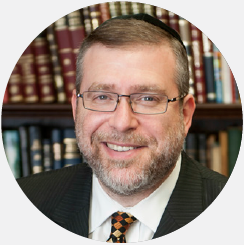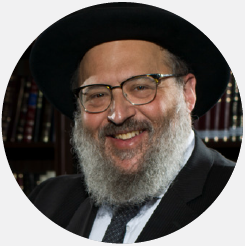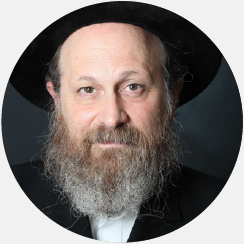The State of Tefillah
 Is There More than One Way to Daven?
Is There More than One Way to Daven?
By Daniel Korobkin
Is all of our tefillah truly “avodah she’balev,” serving Hashem with our hearts, as Maimonides states? What about the prayers that we say without any thought or kavanah whatsoever? Is there any value to such prayer? I believe that for Maimonides, there may indeed be no real value to such prayer, since he states that any prayer that is not accompanied by kavanah is not prayer at all.1
And yet, we engage in this kind of prayer all the time. Consider people who gather to recite Tehillim for an ill person, in the hopes that their prayers will reach some force in Shamayim that will unlock the cure for the individual. Are these people really engaging in avodah she’balev? I think not, and here’s my proof: In many of these prayer groups, people instinctively feel that it’s better to say the verses in Hebrew even if one doesn’t understand the words than to say a translation of the texts in English. Why is that?
There is a second modality of prayer that is acknowledged by many rabbis. We might call this kind of prayer “incantational” or “theurgic” tefillah. Or, to use more familiar language, we view our prayers as providing a “segulah.” That is, the holy words of the tefillot and verses from Tanach have, in some way, a supernatural effect, regardless of the thoughts that accompany those words. In Derech Hashem, Rabbi Moshe Chaim Luzzatto tells us that while the most effective way to recite verses from Tanach is to say them with understanding, the mere recitation of Holy Scripture—even when devoid of kavanah—can nonetheless generate profound influence from above:
“God chose a particular combination of words . . . to constitute the Torah . . . and on a lower level, the Prophets and Writings. God then bound His Influence to the words of these books in such a way that when a person actually pronounces the words of Torah, the Influence is transmitted to him”.2
Thus, there are really two modalities of prayer: One, avodah she’balev, the kind of prayer whereby we intellectually and emotionally connect with Hashem through tefillah, and two, “incantational” prayer, where we hope to draw down positive spiritual influence through the mere recitation of holy words. When approaching tefillah, this bifurcation is important to draw in our own minds for a few reasons. First of all, not all prayer will fit into both categories. The Amidah appears to be exclusively of the former category, to the point where the Shulchan Aruch rules that those who recite the Amidah without kavanah do not fulfill their chiyuv.3 But so many other portions of our daily tefillah—such as Pesukei D’Zimra and the Shema4—contain both the avodah she’balev and the theurgic benefits of prayer. This can at least console those who find their minds wandering during certain parts of the service.
Secondly, our understanding of what tefillah is will affect how we pray. Do we daven in Hebrew with less understanding in order to garner the “segulah” benefits, or in English with greater understanding for the kavanah benefits? This is debated by the posekim without definitive resolution.5 It would seem that latitude is granted to the individual, at least on a temporary basis (until he becomes well-versed in the translation), to decide for himself which form of prayer would be more beneficial at the moment.
Finally, from an educational standpoint, we’d do well to make sure our students are conscious of these two forms of tefillah. Perhaps a greater understanding of this distinction will allow our youth to focus better on specific parts of the tefillah without viewing the entire davening as one formidable monolith. Hopefully, this could result in more meaningful prayer in our schools and shuls.
Notes
1. Mishneh Torah, Hilchot Tefillah 4:15.
2. See Derech Hashem (The Way of God) 4:2. See also 4:4, where he discusses the power of reciting the Shema.
3. See Orach Chaim 98:1 and 101:1. In this short essay, we are not undertaking the halachic discussion as to what one does post facto (bedieved) when discovering that they have not davened with kavanah. We refer the reader to the ruling of the Mabit discussed in a recent Halacha Yomis at the OU’s web site, available here: oukosher.org/halacha-yomis/got-distracted-not-kavana-first-bracha-avos-now-middle-shmoneh-esrei-continue-davening-will-brachos-considered-brachos-lv/.
4. With the exception of the first verse, which must be recited with kavanah. See Orach Chaim 60:5.
5. See Sefer Chassidim (Margolis edition) 588 and 785, Magen Avraham 101:5, Mishnah Berurah 62:2 and Biur Halachah ad loc., and Mishnah Berurah 101:4 and Biur Halachah ad loc.
Rabbi Daniel Korobkin is mora d’atra of Beth Avraham Yoseph of Toronto Congregation.
 Teaching Our Kids to Pray
Teaching Our Kids to Pray
By Eliezer Breitowitz
There is a well-known Brisker Torah which resolves an apparent contradiction in the Rambam by suggesting that there are two types of kavanah in tefillah. The first is an awareness that one is standing before Hashem. This is necessary throughout the entire Shemoneh Esrei; lacking this awareness, one is not considered as having performed the requisite ritual. The second is an understanding of the precise meaning of the words being said. This requirement is only necessary in the First Blessing of the Shemoneh Esrei. (See Chiddushei Rabbeinu Chaim Halevi, Hilchos Tefillah, Perek 4, Halachah 1.)
Of course, this leads to a counter-intuitive conclusion: As long as one is conscious of the fact that he is standing before Hashem as he davens, he discharges his tefillah obligation despite the fact that he has no idea what he is saying!
I only have one way to explain it: The rabbinic obligation of tefillah was never designed to compel us to pray. Rather, it was ordained for the sole purpose of our developing a “prayer habit.” As long as I go through the motions of prayer (i.e., standing before Hashem), I have discharged my obligation despite the fact that there was no real praying taking place, as I did not understand my own words. What is the value of this? Over the course of a life in which this routine is practiced, Chazal undoubtedly assumed that—sooner or later—our inadequate recitations would evolve into genuine prayer.
My thesis, simply put, is that we should view our daily tefillos not as obligations fulfilled, but as steps—perhaps baby steps—in a life-long process of self-education in prayer.
Of course, the ultimate goals of tefillah are that our children and students should pray with faith, fervor and understanding, and that through prayer they should forge a relationship with the Ribbono Shel Olam that will give richness and meaning to their lives, as well as comfort and support in times of stress and hardship.
But achieving these goals is a long process and may be delayed until well into the older teen years and perhaps even early adulthood. What should the intermediate goals be? Here we can be more modest, keeping the idea of the “prayer habit” in mind. At the elementary and younger secondary levels we want to impart a basic familiarity with the prayers and their halachos, respect for tefillah as expressed in deportment and dress, as well as aspects of good prayer hygiene—extended focus and concentration, saying each word properly and slowly, and proper standing and sitting positions. Establishing a good “prayer habit” creates the space for perfunctory prayer to become transformed into passionate prayer at a later stage.
At what age should a child be brought to shul? Should parents bring young children to shul just to play?
Obviously, much depends on the nature of the shul. At most shtiebels, there’s no place for the children to play and no proper supervision; at larger community shuls, provisions are generally made for young children. (This, by the way, is a strong argument in favor of the shul, but this is just one aspect of a much broader discussion.)
These, however, are mere logistical questions. The philosophic issue is more fundamental. What is the educational value of bringing that young child to shul? To me, it seems that we must return to the idea of the “prayer habit.” Once a child is old enough to understand that he is coming to a special place where special things are done—even if his participation only entails kissing the Sefer Torah or standing under an adult’s tallis for Birkas Kohanim—there is much to be gained. He will feel at home in the shul and slowly become familiar with its ways. The “prayer habit” will begin to take root.
Should teens pray with their parents or at a teen minyan?
I happen to be a fan of teen minyanim, provided that the participants are already somewhat conscientious about their tefillah. (If the goal is to start late, end early, avoid the rav’s sermon, and talk to their friends—forget it.) The teen minyan—which must be led by an appropriate individual—should be arranged in such a way that discourages the frivolous. It should feature a substantial shiur/devar Torah directed to the age level and interests of the participants. If anything, it should be slower-paced than the main shul minyan to reinforce the boys’ weekday yeshivah habits. It should have lots of singing and, of course, a kiddush that appeals to the youthful palate. (Again, the teen minyan is more likely to be found in the large community shul than the basic shtiebel.)
But what about the advantages of sitting next to one’s father in shul? Won’t the young man in question perform at a higher level?
The assumption which underlies the above question depends on several factors. First, is the father himself an exemplary tefillah role model? Second, is the father an effective disciplinarian? (Sadly, I have observed fathers whose self-awareness is astoundingly lacking; they will chastise their sons for offenses they themselves may have committed just moments before.)
In reality, however, this question is irrelevant. If we view the tefillah experience of the young as a series of stepping stones on the path to mature prayer, the maximization of the current tefillah is not the operative concern. Rather, the material issue is just this: What will be more conducive to the development of a positive life-long “prayer habit”—main shul with Dad or the well-run teen minyan which is directed toward the boys’ needs and abilities? To me, the answer is obvious.
Rabbi Eliezer Breitowitz, rosh yeshivah, Yeshiva Darchei Torah in Toronto, has over twenty years of experience in Jewish education. As founder and dean of the kollel and mesivta in San Diego, California, he developed and supervised programs at the secondary, post-secondary and graduate levels.
 Women and Prayer
Women and Prayer
The exemption of women from tefillah b’tzibbur is a tremendous opportunity. Women have so much flexibility to connect and daven in places and times of their choice. We can take the opportunity to be creative and find places of beauty or spirituality to pray, or we can choose to pray in solitude if that is our preference. I have often found that my kavanah is improved without the distraction of the shul surroundings, the doors opening and closing, the people traffic. I cherish the flexibility to choose when and where I daven and to make a connection with God.
Debbie Stone is the associate director of education for National NCSY. Originally from London, she studied in Michlalah Jerusalem and holds a BA in humanities with an emphasis in Jewish studies, as well as a teaching degree from the General Teaching Council for England. She is currently pursuing a doctorate in educational leadership at Yeshiva University’s Azrieli Graduate of Jewish Education and Administration and just completed working on the new NCSY Siddur.
 As a mom of young children, I find it challenging to make time for formal tefillah. My time is no longer my own, even when I have a minute, my mind immediately spins in a million directions to the myriad tasks that I need to accomplish that day. Finding time to create a sacred space and daven is much more challenging than I ever recall.
As a mom of young children, I find it challenging to make time for formal tefillah. My time is no longer my own, even when I have a minute, my mind immediately spins in a million directions to the myriad tasks that I need to accomplish that day. Finding time to create a sacred space and daven is much more challenging than I ever recall.
At the same time, I feel like I’m talking to Hashem All. Day. Long. Spontaneous prayer has become my go-to way of keeping connected with Hashem throughout the most mundane moments. I talk to Hashem about anything and everything. I feel like I have such a personal relationship with my Creator, and that whenever I need strength, He is the one I turn to.
My kids talk to Hashem all the time as well, thanking Him for creating important things in this world, like Elmo. I love the fact that their relationship with God is so real.
I look forward to a time where I will be able to sit in shul or at home and daven with proper kavanah, but until then, I am grateful that Judaism creates a space for hisbodedus, a personal, direct, one-on-one relationship between ourselves and our Father in Heaven.
Erin Stiebel, an educator, serves as the director of NCSY GIVE, a volunteer-focused Israel program for high school girls. Previously, Erin worked as an educational consultant for Akiva Hebrew Day School in Southfield, Michigan, taught Judaic studies at SAR Academy in New York and worked for NCSY in various educational and administrative roles. Erin earned her BA in Jewish studies from Yeshiva University, MA from Azrieli Graduate School of Jewish Education and MBA from Touro College Graduate School of Business.
 Self-Sufficiency—An Obstacle to Tefillah
Self-Sufficiency—An Obstacle to Tefillah
By Moshe Weinberger, as told to Bayla Sheva Brenner
Learning Torah is avodah she’b’moach, work of the intellect, whereas tefillah is avodas halev, work of the heart. Work of the intellect is relatively easy. Work of the heart, however, requires a tremendous amount of effort.
For the heart to be awakened, one needs to feel a certain sense of longing, a need for Hashem. One of the terms for tefillah is “tefillah l’oni,” the tefillah of the poor person.” Dovid HaMelech speaks about this. One is compelled to pray when he feels a complete dependence upon God.
The underlying problem in our time is that we don’t feel the instability of life the way we used to. We are not threatened by pogroms every Monday and Thursday; we have roofs over our heads and food in the refrigerator. Even though we have challenges, for the most part, the feeling of neediness that generates a longing for God is diminished. There’s a feeling of confidence, that one is in control of his destiny. Tefillah l’oni doesn’t only mean financial impoverishment; it implies a sense of emptiness and need.
To be honest, we are all impoverished. So many of us have difficulty with our children, with shidduchim, with our relationships . . . that could be a starting point [to engaging our hearts in tefillah]—acknowledging our individual impoverishment, our neediness and vulnerability.
Rabbi Moshe Weinberger, a noted speaker, has served as mashpia in Yeshiva University since 2013, and is the founding mora d’atra of Congregation Aish Kodesh in Woodmere, New York.
